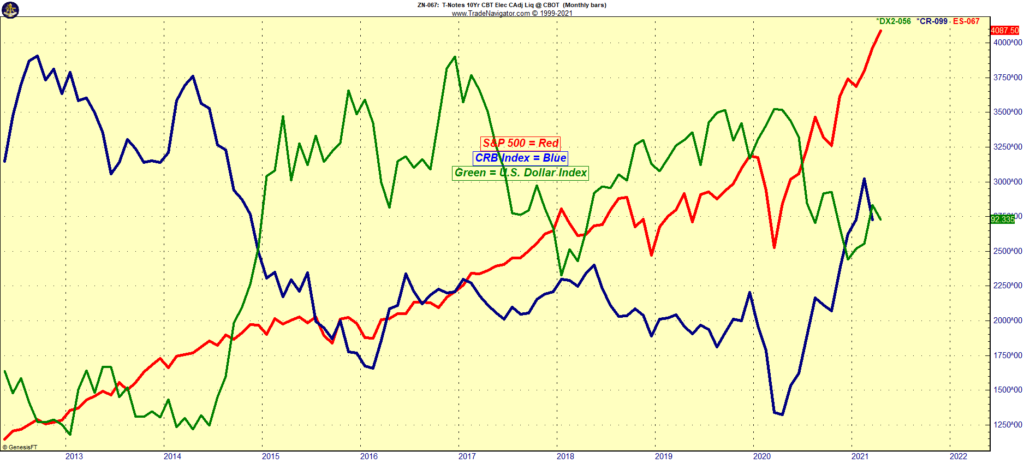We seem to have a banner week for the bulls all around. We are on track for corn to close into new highs for the advance and are looking at double-digit gains for wheat and soybeans. Cotton shows decent strength, and gold is on track to close higher and appears poised to reverse its eight-month downtrend. Notes and bonds have continued to recover, suggesting we have may pushed longer-term interest rates as high as need be, even with inflation concerns, and the equity markets? Well, what can you say? They have again moved into new record highs, and this with the backdrop of a likely hike in corporate taxes. Of course, there are a few losers out there. Crude oil is poised to close lower and continues to show signs of topping, and the U.S. Dollar is around 80-points lower for the week and may have capped off its initial recovery. Now there are probably a few of you old-timers out there thinking, “commodities and equities should not be advancing together like this, there are just too many opposing forces.” All I can say is, welcome to the brave new world of investing, where nothing has to make sense.
While it seems unlikely, there is a chance that Uncle Sam will try and disrupt the bulls party in the ag markets later this morning with the April supply/demand reports. Here again, is what the trade is expecting them to bring to the event. Domestic corn ending stocks are expected to be reduced to 1.396 billion bushels, beans at 119 million, and wheat at 846 million. The average estimate for South American crops has Brazil at 134 MMT of beans and 108.3 million corn, with Argentina at 46.6 MMT of beans and 46.6 MMT of corn.
Overall, crop conditions remain good in Europe’s largest producer. AgriMer reports that France’s soft wheat conditions stand at 87% good/excellent, compared with 62% last year. Winter barley is rated 82% good/excellent, and spring barley even better at 92%.
As we are aware, things have not gone as well in Argentina, and the Buenos Aires Grain Exchange has lowered their bean crop estimate to 43 MMT, citing dry weather as the issue.
China has finally decided to bump up its corn import forecast, officially raising it from 10 MMT to 22 MMT. Before you get too excited about that revelation, keep in mind that the USDA already has this number at 24 MMT.
Finally, this morning, the government has published the March PPI numbers, and guess what? Inflationary pressure is a bit greater than expected. The Final Demand number increased by 1%, compared with an expected .4%, and even excluding food and energy, the figure rose .7% instead of the expected .2%.
